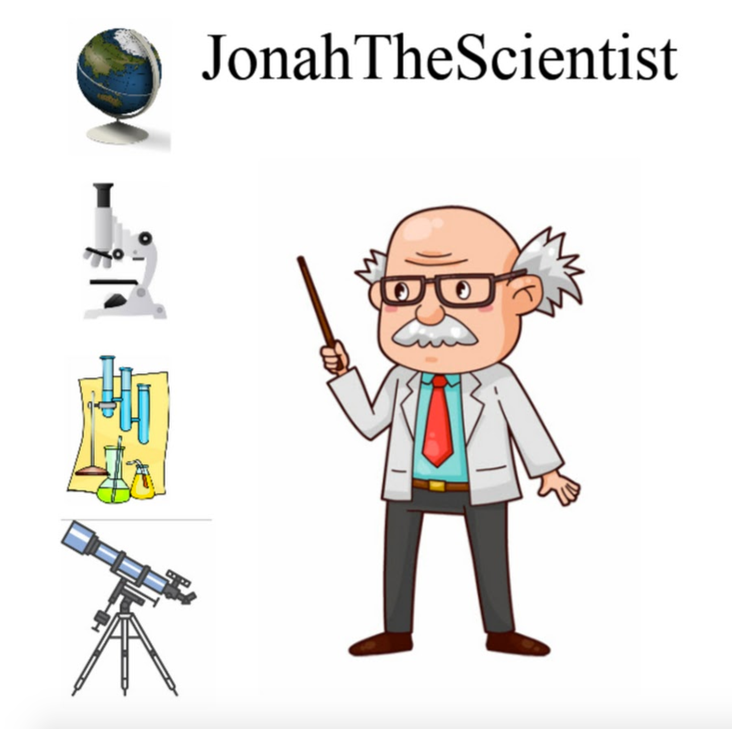Samuel Birley Rowbotham - revisiting his flat Earth lunar eclipse claims
Dear readers,
This article is still in development
This on-going article serves as a place holder to deposit information about various eclipses as reported by Samuel Rowbotham in his book Zetetic Astronomy: Earth Not a Globe.
Today we have accurate calculators and planetarium simulators that can determine the actual sunrise and moonrise times for any specific date, anywhere in the world. Let's use these current systems to verify / nullify the claims made by Samuel Rowbotham concerning the lunar eclipses of = July 17th , 1590; November 3rd , 1648; June 16th , 1666; and May 26th , 1668.
- - -
So let's investigate Samuel's claim - "the moon rose eclipsed whilst the sun was still apparently above the horizon."
1. Fact check = Correct. Since a lunar eclipse from start to finish can last almost 4-hours, the sun and moon can both be above the horizon at the same time (starts 2-hours before sunset). That is not a violation of heliocentric moon-earth orbital parameters.
2. If Samuel implies that at the time of total lunar eclipse (the hour and minute of a full moon) the sun is also above the horizon, and there is no atmospheric refraction, then that would violate the 180-degree heliocentric moon-earth requirement.
But that is not the case for any of the lunar eclipses cited by Rowbotham in his text.
3. Fact check = FAIL. Samuel Rowbotham fails to consider that a lunar eclipse can last for hours and minutes. It's only at the exact time of full moon, and where is the sun is at that moment, that is relevant.
What is Samuel Rowbotham trying to prove? Does he even know?
If the sun-earth-moon heliocentric centric model is correct, then a full moon can only occur when all three spheres line up exactly at 180-degrees.
And since the Moon is always moving with respect to the sky, technically speaking, a full moon occurs at an exact date & time. A few seconds before or after and the moon is no longer full.



-
A lunar eclipse occurs at full moon time, but not every month. That's because the moon's orbit is inclined 5-degrees with respect to the Earth. So most of the time the full moon passes either ABOVE or BELOW the Earth's shadow, and no eclipse.
Lunar eclipses can be seen from anywhere on the planet for which the moon is above the horizon at the time of eclipse. Unlike solar eclipses, where the timing of the eclipse phases depends on the geographical position of the observer, the times of lunar eclipses are the same regardless of the place of observation.
Furthermore, at the distance of the moon from earth, the shadow cone has a diameter of 9200 km, while the diameter of the moon is 3476 km. Therefore, the shadow cone is more than twice the moon’s diameter and, as a result, the total lunar eclipse can last for a longer time than a solar eclipse.
For the Moon to be reached by the shadow of the Earth it is necessary that the node* length does not exceed the 12º 15'. If it is less than 9º 30', a total lunar eclipse will occur. In latitude, a maximum will be 1 25' for penumbral eclipse and 24’ for a total.
Therefore, in these circumstances of proximity to the node, it opens a "window" for 37 ½ days where the eclipse conditions are good. These configurations occur two or three times a year - every 173.31 days. The eclipse year (346.62 days) is the time taken for repeat the alignment of the Sun with the Moon at the same node and the Earth, i.e., contains exactly two eclipse’s stations.
* An orbital node is either of the two points where an orbit intersects a plane of reference to which it is inclined.

And a lunar eclipse (a partial) can last for a long time:
The Penumbral lunar eclipse of February 24, 1446 BC, lasted for 4 hours and 19 minutes
https://moonblink.info/Eclipse/eclipse/-1445_02_24

NASA Eclipse Web Site
https://eclipse.gsfc.nasa.gov/eclipse.html
- - -

- - -
According to flat Earth advocates...
Here is the actual chapter in Zetetic Astronomy: Earth Not a Globe where the above has been paraphrased:
There are many places to get a copy of the book.
http://www.freepdf.info/index.php?post/Birley-Rowbotham-Samuel-Earth-not-a-globe
11 Cause of Solar and Lunar Eclipse
A solar eclipse is the result simply of the moon passing between the sun and the observer on earth. But that an eclipse of the moon arises from a shadow of the earth, is a statement in every respect, because unproved, unsatisfactory. The earth has been proved to be without orbital or axial motion; and, therefore, it could never come between the sun and the moon. The earth is also proved to be a plane, always underneath the sun and moon; and, therefore, to speak of its intercepting the light of the sun, and thus casting its own shadow on the moon, is to say that which is physically impossible.
Besides the above difficulties or incompatibilities, many cases are on record of the sun and moon being eclipsed when both were above the horizon. The sun, the earth, and the moon, not in a straight line, but the earth below the sun and moon–out of the reach or direction of both–and yet a lunar eclipse has occurred! Is it possible that a “shadow” of the earth could be thrown upon the moon, when sun, earth, and moon, were not in the same line? The difficulty has been met by assuming the influence of refraction, as in the following quotations:
“On some occasions the horizontal refraction amounts to 36 or 37 minutes, and generally to about 33 minutes, which is equal to the diameter of the sun or moon; and, therefore, the whole disc of the sun or moon will appear above the horizon, both at rising and setting, although actually below. This is the reason that the full moon has sometimes been seen above the horizon before the sun was set. A remarkable instance of this kind was observed at Paris, on the 19th of July, 1750, when the moon appeared visibly eclipsed, while the sun was distinctly to be seen above the horizon. On the 20th of April, 1837, the moon appeared to rise eclipsed before the sun had set. The same phenomenon was observed on the 20th of September, 1717.”
“In the lunar eclipses of July 17th , 1590; November 3rd , 1648; June 16th , 1666; and May 26th , 1668; the moon rose eclipsed whilst the sun was still apparently above the horizon. Those horizontal eclipses were noticed as early as the time of Pliny.” On the 17th of January, 1870, a similar phenomenon occurred; and again in July of the same year.
The Spherical Form of the Earth, A Reply to Parallax, In Letters to a Friend
https://play.google.com/books/reader?id=kpJaAAAAcAAJ&hl=en&pg=GBS.PA7
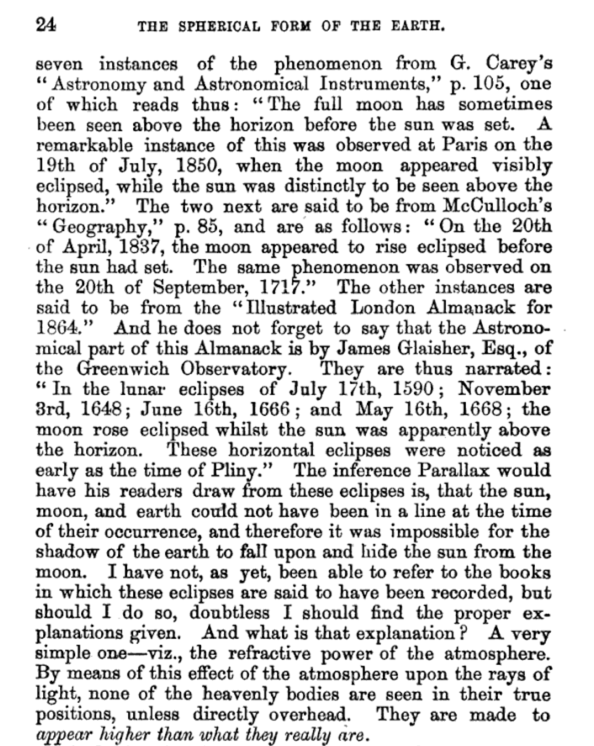
- - - - - - - - - - - - - - - - - - - - - - - - - - - - - - - - - - - - - - - - - - - - - - - - - - - - - - - - - - - - - - - - - - - - - - - - - - - - - - - -
dd
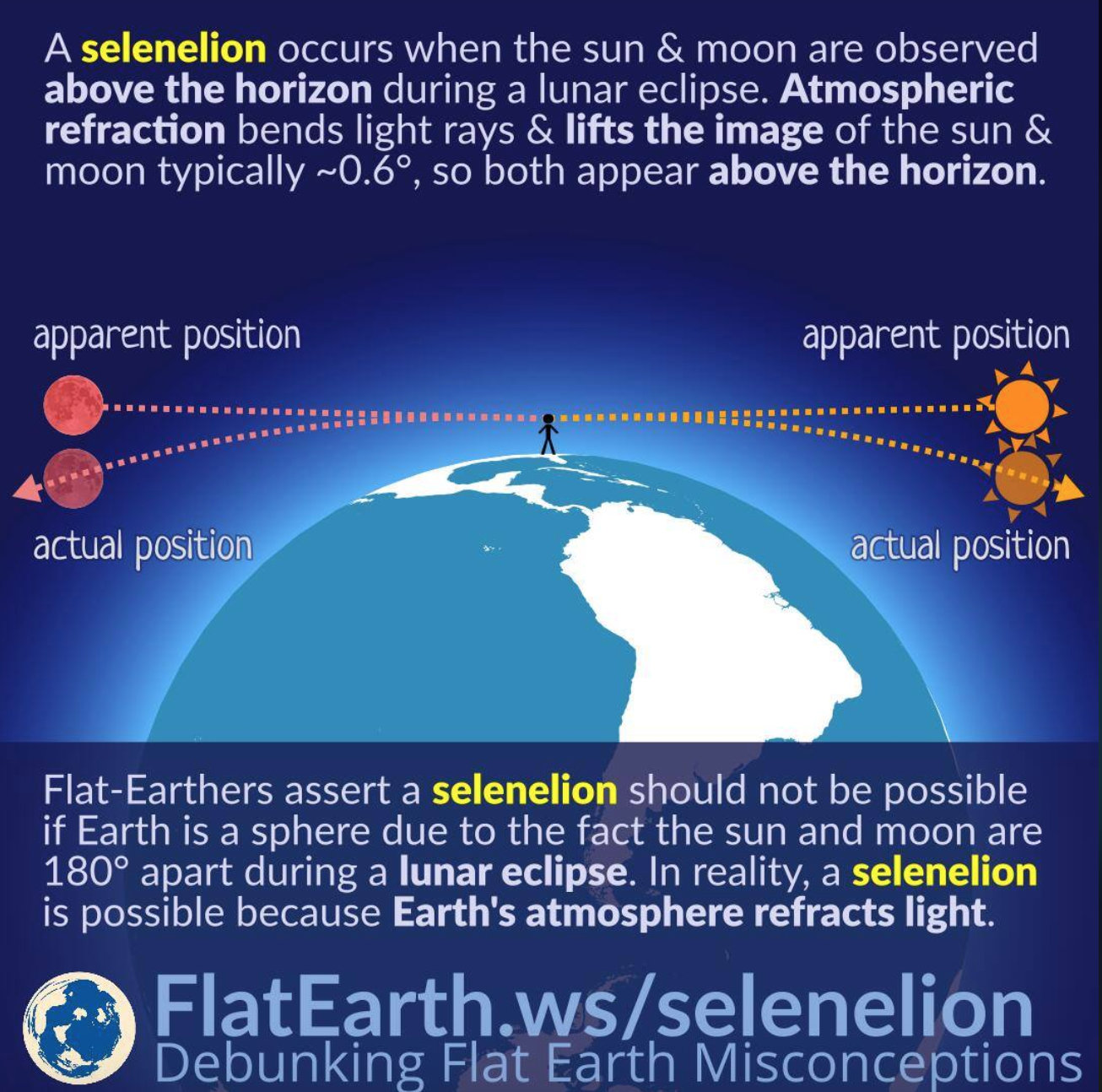
- - - - - - - - - - - - - - - - - - - - - - - - - - - - - - - - - - - - - - - - - - - - - - - - - - - - - - - - - - - - - - - - - - - - - - - - - - - - - - - -
As observed from the Greenwich Observatory, London, England:
“In the lunar eclipses of July 17th , 1590; November 3rd , 1648; June 16th , 1666; and May 26th, 1668; the moon rose eclipsed whilst the sun was still apparently above the horizon. Those horizontal eclipses were noticed as early as the time of Pliny.” On the 17th of January, 1870, a similar phenomenon occurred; and again in July of the same year.
- - - - - - - - - - - - - - - - - - - - - - - - - - - - - - - - - - - - - - - - - - - - - - - - - - - - - - - - - - - - - - - - - - - - - - - - - - - - - - - - - - - - - -
Lunar eclipse of July 17, 1590
From world-timedate.com
http://www.world-timedate.com/astronomy/sunrise_sunset/sunrise_sunset_time.php?month=7&year=1590&sun_param=0&city_id=148
Sunrise occurred at 04:02:49 AM GMT
Sunset occurred at 20:09:42 PM GMT
- -
Full moon occurred at 04:01:22 AM GMT (1-minute and 27-seconds before sunrise)
Sunrise occurred at 04:02:49 AM GMT
Moon set at 04:13:22 AM GMT
Result: The full moon happened before sunrise, so the heliocentric model is not disproved.
Sun and Moon was visible above the horizon at the same time from 04:02:49 AM GMT to 04:13:22 AM GMT, as correctly stated by Samuel Rowbotham in his book Zetetic Astronomy: Earth Not a Globe. But so what? That means nothing.

From world-timedate.com
http://www.world-timedate.com/astronomy/moonrise_moonset/moonrise_moonset_time.php?city_id=148&month=7&year=1590
Full moon occurred at 04:01:22 AM GMT
Moon set at 04:13:22 AM GMT
=> so the moon was above the horizon for 12 minutes before it set.

(https://moonblink.info/Eclipse/eclipse/1590_07_17)

- - - - - - - - - - - - - - - - - - - - - - - - - - - - - - - - - - - - - - - - - - - - - - - - - - - - - - - - - - - - - - - - - - - - - - - - - - - - - - - - - -
Lunar eclipse of November 3, 1648
From world-timedate.com
http://www.world-timedate.com/astronomy/sunrise_sunset/sunrise_sunset_time.php?month=11&year=1648&sun_param=0&city_id=148
Sunrise occurred at 06:58:33 AM
Sunset occurred at 16:28:45 PM
- -
There was no full Moon on November 3, 1648, so that entry in Zetetic Astronomy: Earth Not a Globe is an error.

From world-timedate.com
http://www.world-timedate.com/astronomy/moonrise_moonset/moonrise_moonset_time.php?city_id=148&month=11&year=1648
There was no full Moon on November 3, 1648, so that entry in Zetetic Astronomy: Earth Not a Globe is an error.

- - - - - - - - - - - - - - - - - - - - - - - - - - - - - - - - - - - - - - - - - - - - - - - - - - - - - - - - - - - - - - - - - - - - - - - - - - - - - - - - - - - - - -
Lunar eclipse of June 16, 1666
From world-timedate.com
http://www.world-timedate.com/astronomy/sunrise_sunset/sunrise_sunset_time.php?month=6&year=1666&sun_param=0&city_id=148
Sunrise occurred at 03:42:36 AM
Sunset occurred at 20:19:40 PM
- - -
Full moon occurred at 19:09:33 PM GMT
Moon rise at 20:10:46 PM GMT
=> so full moon occurred 1-hour, 1-minutes and 13-seconds BEFORE moon rise in the London sky.
The heliocentric model is not disproved.

From world-timedate.com
http://www.world-timedate.com/astronomy/moonrise_moonset/moonrise_moonset_time.php?city_id=148&month=6&year=1666
Full moon occurred at 19:09:33 PM GMT
Moon rise at 20:10:46 PM GMT
=> so full moon occurred 1-hour, 1-minutes and 13-seconds BEFORE moon rise in the London sky.
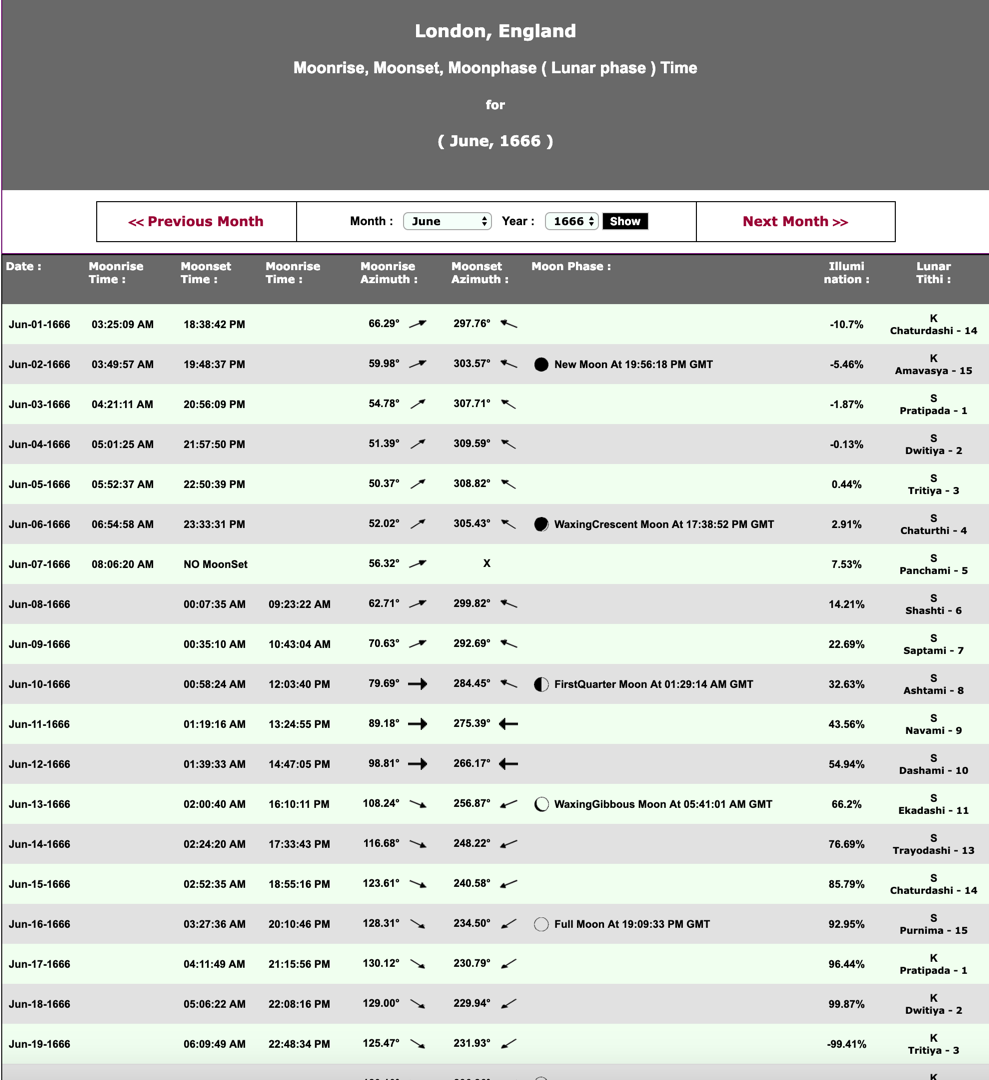
(http://astro.ukho.gov.uk/eclipse/1321666/)

- - - - - - - - - - - - - - - - - - - - - - - - - - - - - - - - - - - - - - - - - - - - - - - - - - - - - - - - - - - - - - - - - - - - - - - - - - - - - - - - - - - - - -
Lunar eclipse of May 26, 1668
From world-timedate.com
http://www.world-timedate.com/astronomy/sunrise_sunset/sunrise_sunset_time.php?month=5&year=1668&sun_param=0&city_id=148
Sunrise occurred at 03:53:51 AM
Sunset occurred at 20:01:51 PM

Moon
From world-timedate.com
http://www.world-timedate.com/astronomy/moonrise_moonset/moonrise_moonset_time.php?city_id=148&month=5&year=1668
Full moon occurred at 03:34:40 AM GMT
Moon set 03:55:25 AM GMT
=> so the moon set 20-minutes and 45-seconds after full moon.
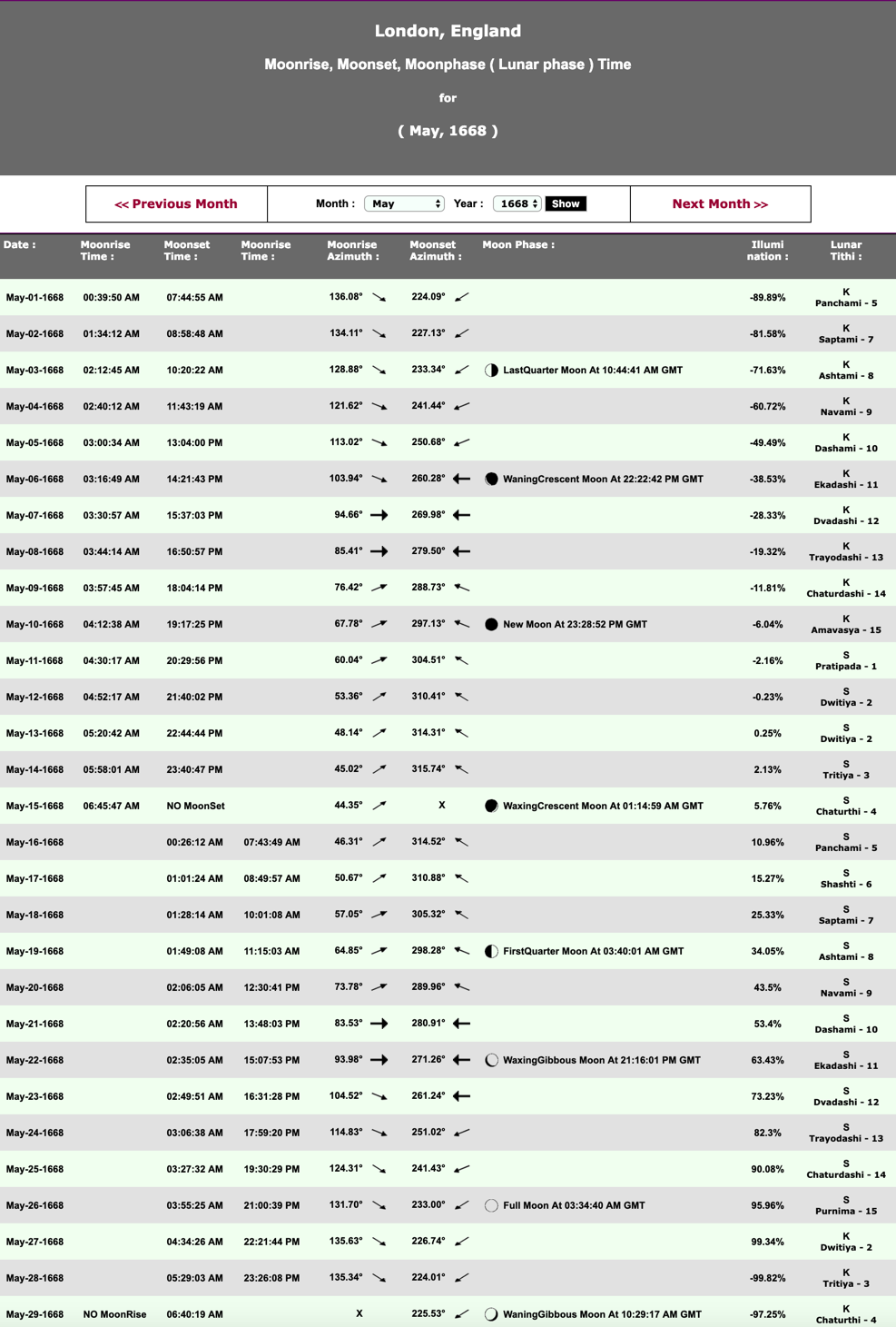
(https://moonblink.info/Eclipse/eclipse/1668_05_26)

- - - - - - - - - - - - - - - - - - - - - - - - - - - - - - - - - - - - - - - - - - - - - - - - - - - - - - - - - - - - - - - - - - - - - - - - - - - - - - - -
As observed from Paris, France:
A remarkable instance of this kind was observed at Paris, on the 19th of July, 1750, when the moon appeared visibly eclipsed, while the sun was distinctly to be seen above the horizon.
On the 20th of April, 1837, the moon appeared to rise eclipsed before the sun had set. The same phenomenon was observed on the 20th of September, 1717.
- - - - - - - - - - - - - - - - - - - - - - - - - - - - - - - - - - - - - - - - - - - - - - - - - - - - - - - - - - - - - - - - - - - - - - - - - - - - - - - - - - - - - -
Lunar eclipse of July 19, 1750
From world-timedate.com
http://www.world-timedate.com/astronomy/sunrise_sunset/sunrise_sunset_time.php?month=7&year=1750&sun_param=0&city_id=206
Sunrise occurred at 04:16:29 AM
Sunset occurred at 19:55:27 PM
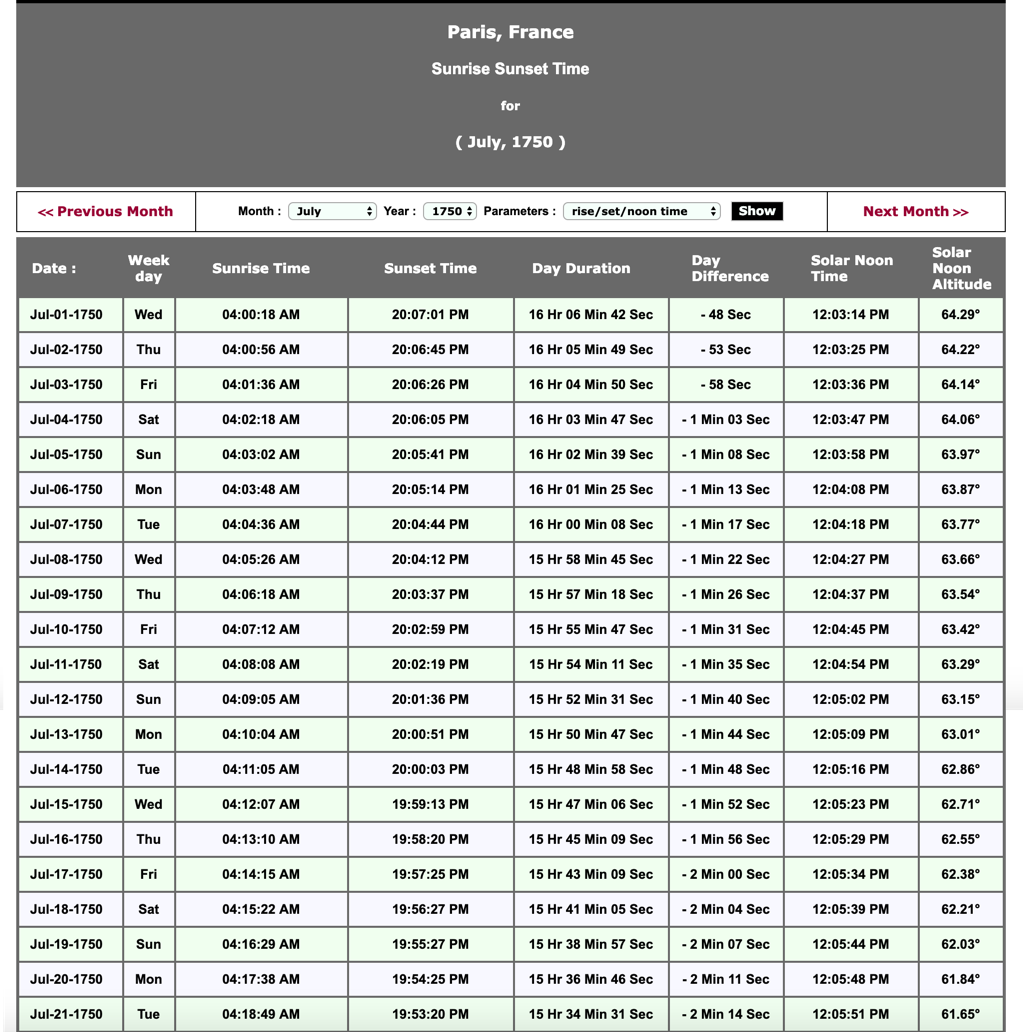
From world-timedate.com
http://www.world-timedate.com/astronomy/moonrise_moonset/moonrise_moonset_time.php?city_id=206&month=7&year=1750
Full moon occurred at 07:42:05 AM PMT
Moon set 04:22:03 AM PMT
=> so the full moon occurred 3-hours, 20-minutes and 2-seconds after the moon set in Paris.

Some confusion here yet to be resolved.
There was a total solar eclipse on July 18, 1750 - the date that Rowbotham in his rtext mentioned was a lunar eclipse. His entry iswrong.
There was a lunar eclipse on June 19, 1750 (one month before the date mentioned by Rowbotham).
(https://moonblink.info/Eclipse/eclipse/1750_06_19)

- - -
(https://eclipses.gsfc.nasa.gov/SEsearch/SEdata.php?Ecl=-17500718)

(https://eclipses.gsfc.nasa.gov/5MCSEmap/-1799--1700/-1750-07-18.gif)

- - - - - - - - - - - - - - - - - - - - - - - - - - - - - - - - - - - - - - - - - - - - - - - - - - - - - - - - - - - - - - - - - - - - - - - - - - - - - - - - - - - - - -
Lunar eclipse of April 20, 1837
From world-timedate.com
http://www.world-timedate.com/astronomy/sunrise_sunset/sunrise_sunset_time.php?month=4&year=1837&sun_param=0&city_id=206
Sunrise occurred at 05:00:19 AM
Sunset occurred 18:58:36 PM

From world-timedate.com
http://www.world-timedate.com/astronomy/moonrise_moonset/moonrise_moonset_time.php?city_id=206&month=4&year=1837
Full moon occurred at 20:50:37 PM PMT
Moon rise at 18:48:58 PM PMT
=> so full moon occurred 2-hours, 1-minute and 39-seconds after moon rise.

(https://moonblink.info/Eclipse/eclipse/1837_04_20)

- - - - - - - - - - - - - - - - - - - - - - - - - - - - - - - - - - - - - - - - - - - - - - - - - - - - - - - - - - - - - - - - - - - - - - - - - - - - - - - - - - - - - -
Lunar eclipse of September 20, 1717
From world-timedate.com
http://www.world-timedate.com/astronomy/sunrise_sunset/sunrise_sunset_time.php?month=9&year=1717&sun_param=0&city_id=206
Sunrise occurred at 05:43:00 AM
Sunset occurred at 18:03:11 PM

From world-timedate.com
http://www.world-timedate.com/astronomy/moonrise_moonset/moonrise_moonset_time.php?city_id=206&month=9&year=1777
No full moon on September 20, 1717

(https://moonblink.info/Eclipse/eclipse/1717_09_20)

-
Update: June 14, 2020
Modern day parallax measurement...
New Horizons is so Far From Earth That the Positions of the Stars Look a Little Different From its Perspective, by Matt Willimans at universetoday.com
https://www.universetoday.com/145888/new-horizons-is-so-far-from-earth-that-the-positions-of-the-stars-look-a-little-different-from-its-perspective/


Excerpt:
For example, we here on Earth are used to thinking that the positions of the stars are “fixed”. In a sense, they are, since their positions and motions are relatively uniform when seen from our perspective. But a recent experiment conducted by the New Horizons team shows how familiar stars like Proxima Centauri and Wolf 359 (two of the closest stars in our neighbors) look different when viewed from the edge of the Solar System.
Located in the constellation Leo, Wolf 359 is an M-type (red dwarf) star that is roughly 7.9 light-years from Earth. It can be found close to the same path the Sun follows through the sky (the ecliptic), but can only be seen with a telescope. And if you’re a Trekkie, you might recognize the name since it was where that major battle with the Borg took place (don’t act like you don’t know!)...
...
This technique involves measuring the relative positions of stars from two different locations to detect any possible shift with respect to more distant objects. For almost two centuries, astronomers have used this technique to measure the distance to nearby stars. Traditionally, astronomers have relied on Earth’s own orbital motion to determine these distances.
Since Earth’s orbit is about 300 million km (186 million mi) in diameter, its vantage point changes considerably in the course of a year. But with greater distances and Earth’s orbit as a “baseline”, astronomers can conduct greater parallax measurements. Given its current distance from Earth, the New Horizons mission team and NASA have decided to do this very thing, and invited the public to participate...
(Please go to the URL listed above and read the entire article)
- - - - - - - - - - - - - - - - - - - - - - - - - - - - - - - - - - - - - - - - - - - - - - - - - - - - - - - - - - - - - - - - - - - - - - - - - - - - - - - -
Conclusions:







